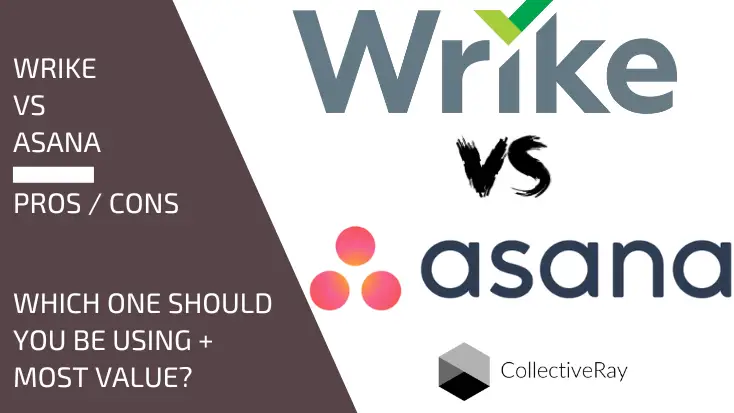
Managing complex tasks has become easier thanks to project management (PM) software. But what if you've heard of many project management tools and can't figure out which one is best for you? That's why we've written this Wrike vs Asana comparison - so you can see what other people have worked with before you pull the trigger.
Project and collaboration technology has advanced significantly, allowing teams to track progress, streamline processes, communicate clearly, and collaborate easily from a single platform. There's a solution tailored to your needs no matter what your business does or how your teams work.
When comparing project management software, however, there are so many apps and systems to choose from that they quickly blur together.
For example, consider Asana and Wrike. They're two of the most popular project management programmes, and you've probably come across them during your search. You might even have an embarrassing number of browser tabs open right now, trying to figure out what they're all about.
Worry no more. This is where your struggle comes to an end.
We pitted them against each other (Wrike vs Asana) to see what their strengths and weaknesses are.
Read on to learn more, or click the image below to get started with more detailed, personalized Project Management recommendations for your company.
{autotoc}

Wrike vs Asana
Asana
Asana, which is named after the yoga term, is on a mission to eliminate email from teamwork. It's a web and mobile-based software developed by Facebook co-founder Dustin Moskovitz and former engineer Justin Rosenstein, who both worked at Facebook to boost employee productivity.
Asana's main focus is on project and task planning and management without the use of email threads. They believe email holds employees back by creating data silos that can cause friction when communicating the right information at the right time.
Wrike
Wrike is a work management and collaboration platform for enterprises and small businesses that was founded in 2006. Their goal is to assist you in going beyond traditional project and task management.
Wrike wants you to "work smarter and get it all done faster" by using their platform. To accomplish this, they concentrate on centralising all of your tools.
Think of the platform as your command centre, where you can communicate, connect, and collaborate with your team.
“Investing in the digital infrastructure that supports productivity and collaboration” allows you to “hire in more places” and take advantage of the “huge increase the available talent pool.”
– Stewart Butterfield, Slack CEO and Co-Founder
How They’re Similar
In the task and project management space, Asana and Wrike are both formidable competitors. Because each vendor focuses solely on collaboration, they all provide similar features. Let's see where Wrike vs Asana have no real differences.
Project Management
Both systems revolve around projects (though Wrike organises projects using "folder hierarchies").
You can create, assign, and schedule tasks in either system's projects, as well as color-code them for better organisation.
You can sort projects by status, tasks, due dates, or completion percentage, depending on your preferences. On the right panel of both systems, you can also see the status of each project.
- Using the folder snapshot in Wrike, you can see statistics.
- Statistics for Wrike Folders.
- You also get a project overview with progress metrics in Asana.
- Metrics for the Asana Project.
Both platforms also make it simple to comment on and discuss projects by mentioning people with @ tags, which helps to eliminate siloed data by bringing everyone into the conversation:
- Asana:
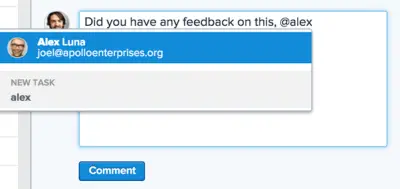
- Wrike:
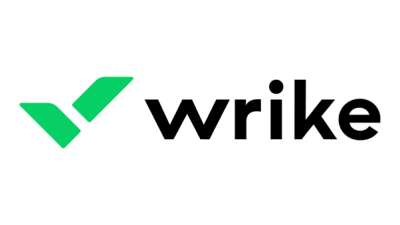
- You can use Wrike to create statuses that correspond to the stages your tasks go through in the work process.
- You can create "sections" in Asana to represent each phase of a project.
The ability to link one task to multiple projects — without duplication — is one of the most useful features of both systems. This is useful when a task is related to multiple goals at the same time or when due dates apply to multiple projects.
Finally, both systems integrate with popular email providers to keep you out of your inbox. You can convert emails into tasks with Asana, and you can transform an email with Wrike with just one click:
- Asana provides a dedicated project inbox.
- Wrike’s activity stream records all updates happening in your workspace:
Apps and Integrations
Wrike and Asana both have Android and iOS apps to help you stay productive while on the go. They also have a large number of app integrations, which allow you to connect your favorite tools to their platform. The following are some of the current integrations:
- WordPress
- Google drive
- Dropbox
- Box
- Calendars
- Wufoo
- Okta
- Hipchat
- Slack
- Zendesk
- Zapier
User-Friendly Interfaces
Wrike and Asana both have attractive, easy-to-use interfaces that make it easy to track progress and understand performance at a glance. You can look at the big picture or drill down to individual projects.
Asana Dashboard
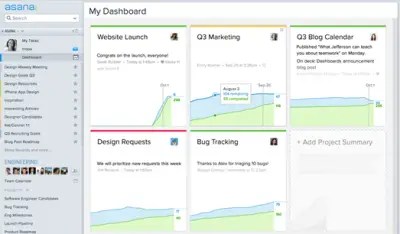
Wrike Dashboards:
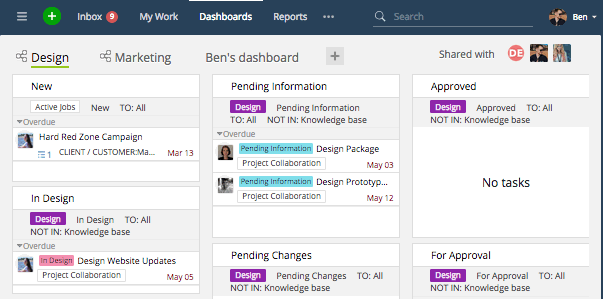
How They’re Different
It's easy to see why people can't choose between them because they have so much in common. However, there are a few internal differentiators that aren't mentioned. Let's take a look at these differences in our Wrike vs Asana comparison now.
Pricing
Wrike and Asana have the same pricing model: a freemium, tiered model. Both allow unlimited collaboration with third parties ("guests" in Asana, "collaborators" in Wrike). This means that approved projects can be accessed by outside clients, vendors, contractors, freelancers, and other third parties for free.
Asana is free for small teams with limited features. To gain access to more features, you must upgrade to their premium version, which costs $10.99 per user per month for their Premium Plan and $24.99 for their Business Plan.
Wrike is free for usage with limited functionality. It costs $9.80 per user per month to use their Team version and $24.80 per user per month for the Business version.
As you can see, Wrike is keeping the price just a few pennies less that the Asana price so that an Apples to Apples comparison reveals them as cheaper.
Larger businesses can get special pricing from both vendors. Companies with more than 100 members should contact Asana, while Wrike has an enterprise tier for companies with five or more users.
Gantt charts
- Although Wrike has built-in Gantt charts to help you track project progress, this feature is not available in the free version.
- Asana offers Gantt-style charts called timelines. They let your team assign work, track milestones, and set dependencies.
Integrations
Both Wrike and Asana have more than 30 integrations. Though many of them are similar, there are a few notable differences:
- Wrike comes with built-in time tracking, whereas Asana integrates with Everhour and Harvest.
- Wrike integrates with Hubspot, whereas Asana integrates with MailChimp and Campaign Monitor for marketing automation.
- Wrike connects to Salesforce, whereas Asana connects to Zapier, which provides custom Zoho CRM automation.
While neither of these integrations is inherently better, worse, or better than the other, it is an important factor to consider when comparing the two programmes.
Wrike prefers many enterprise-focused integrations, whereas Asana prioritises integration with many SMB tools. Finally, each company offers a flexible API, so don't be discouraged if you already have your heart set on one — there's a good chance it can be customized to meet your needs.
Read More: Jira vs Asana
Support
Expecting the worst isn't healthy, but when things go bad, you'll need all the help you can get. For troubleshooting, Asana offers email support, FAQs, a knowledge base, and videos. Wrike provides a similar mix of electronic support, as well as phone and live chat support.
Conclusion of Wrike vs Asana
Asana refers to the art of sitting still while restoring and maintaining health in yoga. This is the foundation on which their software was built.
Asana was created to assist teams in remaining mindful of one another, providing transparency, facilitating collaboration, and “approach work with calmness and composure, even (or especially) when things get hard.”
The simplicity of Asana is its strength. Individual work, as well as team communication and workflows, are supported.
It's simple to get a clear picture of priorities and tasks, as well as collaborate on those that involve other people. Asana isn't trying to be everything to everyone; they're not interested in creating customized versions for a specific industry or company size. Asana, on the other hand, actively avoids feature bloat:
"We have a philosophy that we hold dear: keep our team small, keep our product honed, and don't expand the product's surface area so that people are confused about what's important to us and what they can expect from us." Focus is what wins in the end.
This explains Asana's understated elegance. It gives you instant access to all of the information you need to do your job.
Asana's goal is to get businesses of all sizes out of their inboxes, and they succeed. Use their interactions and API to support your specific use case if you need something extra à la carte, or if you already have an app that you love.
Wrike may be right for you if you value communication and coordination but want to go beyond traditional task management.
They have a number of enterprise-level features, such as built-in time tracking, which could be particularly useful for large businesses or remote workers.
Wrike focuses on getting you out of all your apps, whereas Asana focuses on getting you out of your inbox.
Their new native document editor, for example, allows users to collaborate on documents and see changes in real time. Your team can make changes to documents without having to save attachments to your computer or send document updates via email:
Last year, Wrike added over 30 new features to their dynamic platform, which can be tailored to your specific needs.
Wrike can help you manage distributed teams and enterprise projects if you've progressed beyond the SMB stage and want to consolidate rather than just connect your projects and apps.
Which is the best project management software for you?
Choosing project management software can be difficult, but having a variety of options is ultimately beneficial. It means that, rather than being forced to adapt to a system, you can find technology that works for you.
Make a map of your current processes before choosing a vendor. Analyze it to see if it's as efficient as possible, then use it to determine what you need in a new system. Integrations may be the most important aspect of some businesses.
Others will be swayed by language support or product demonstrations.
If you're still having trouble deciding between Wrike and Asana use any software comparison tool to find the right option for your business.
You may find a third option that best helps you achieve your goals.
Wrike vs Asana FAQs
What is the difference between Wrike project management and Asana project management?
Wrike is a large company's answer to project management bottlenecks, whereas Asana is ideal for a small team. We've dug deeply into the differences in the above article, but the size of company each platform caters for is the fundamental difference.
What is the price of asana or Wrike?
Asana is free for up to 15 users with limited features. For the Premium version, each user costs $10.99 per month, while the Business version costs $24.99 per month. Wrike is free for up to five users but has limited functionality. The Team version costs $9.80 per month per user, while the Business version costs $24.80 per user month..
What is the best Wrike alternative?
We believe that if you are a small company, Asana is a great alternative to Wrike. In contrast to Wrike's interface, Asana is very easy to use but also very unstructured. Its screen is divided into sections with readable controls written in large, easy-to-read fonts. The interface's colour scheme helps to highlight tasks, and the layout is neat and uncluttered. All-in-all if you want simple project management, Asana fits the bill.
